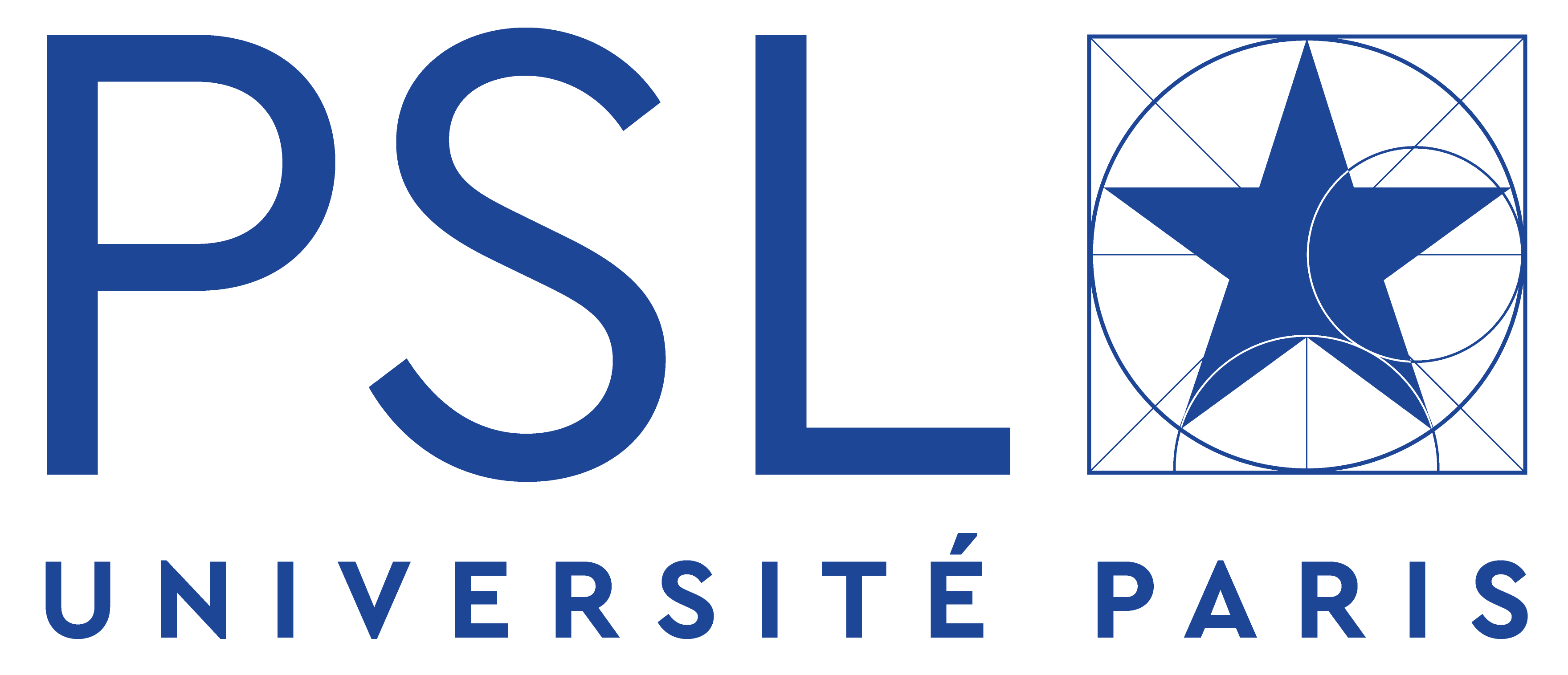Quantitative evaluation of methods to analyze motion changes in single-particle experiments
Muñoz-Gil, G., H. Bachimanchi, J. Pineda, B. Midtvedt, G. Fernández-Fernández, B. Requena, Y. Ahsini, S. Asghar, J. Bae, F. J. Barrantes, S. W. B. Bender, C. Cabriel, J. A. Conejero, M. Escoto, X. Feng, R. Haidari, N. S. Hatzakis, Z. Huang, I. Izeddin, H. Jeong, Y. Jiang, J. Kæstel-Hansen, J. Miné-Hattab, R. Ni, J. Park, X. Qu, L. A. Saavedra, H. Sha, N. Sokolovska, Y. Zhang, G. Volpe, M. Lewenstein, R. Metzler, D. Krapf, G. Volpe, and C. Manzo
Nature Communications 16, no. 1 (2025)

Abstract: The analysis of live-cell single-molecule imaging experiments can reveal valuable information about the heterogeneity of transport processes and interactions between cell components. These characteristics are seen as motion changes in the particle trajectories. Despite the existence of multiple approaches to carry out this type of analysis, no objective assessment of these methods has been performed so far. Here, we report the results of a competition to characterize and rank the performance of these methods when analyzing the dynamic behavior of single molecules. To run this competition, we implemented a software library that simulates realistic data corresponding to widespread diffusion and interaction models, both in the form of trajectories and videos obtained in typical experimental conditions. The competition constitutes the first assessment of these methods, providing insights into the current limitations of the field, fostering the development of new approaches, and guiding researchers to identify optimal tools for analyzing their experiments.
|


|
3D Single-Molecule Super-Resolution Imaging of Microfabricated Multiscale Fractal Substrates for Calibration and Cell Imaging
Cabriel, C., R. M. Córdova-Castro, E. Berenschot, A. Dávila-Lezama, K. Pondman, S. Le Gac, N. Tas, A. Susarrey-Arce, and I. Izeddin
ACS Applied Materials and Interfaces 17, no. 6, 9019-9034 (2025)

Abstract: Microstructures arrayed over a substrate have shown increasing interest due to their ability to provide advanced 3D cellular models, which open up new possibilities for cell culture, proliferation, and differentiation. Still, the mechanisms by which physical cues impact the cell phenotype are not fully understood, hence the necessity to interrogate cell behavior at the highest resolution. However, cell 3D high-resolution optical imaging on such microstructured substrates remains challenging due to their complexity as well as axial calibration issues. In this work, we address this issue by leveraging the geometrical characteristics of fractal-like structures, which serve as axial calibration tools and modulate cell growth. To this end, we use multiscale 3D SiO2 substrates consisting of spatially arrayed octahedral features of a few micrometers to hundreds of nanometers. Through optimizations of both the structures and optical imaging conditions, we demonstrate the potential of these 3D multiscale structures as an alternative to electron microscopy for material imaging but also as calibration tools for 3D super-resolution microscopy. We used their multiscale and known geometry to perform lateral and axial calibrations in 3D single-molecule localization microscopy (SMLM) and assess imaging resolutions. We then utilized these substrates as a platform for high-resolution bioimaging. As a proof of concept, we cultivate human mesenchymal stem cells on these substrates, revealing very different growth patterns compared to flat glass. Specifically, the spatial distribution of cytoskeleton proteins is vastly modified, as we demonstrate with a 3D SMLM assessment.
Keywords: 3D single-molecule localization microscopy; bioimaging; multiscale material; fractal-like microstructures; calibration; material imaging
|

|
Single-emitter super-resolved imaging of radiative decay rate enhancement in dielectric gap nanoantennas
Córdova-Castro, R. M., B. Van Dam, A. Lauri, S. A. Maier, R. Sapienza, Y. De Wilde, I. Izeddin, and V. Krachmalnicoff
Light: Science and Applications 13, no. 1 (2024)
Abstract: High refractive index dielectric nanoantennas strongly modify the decay rate via the Purcell effect through the design of radiative channels. Due to their dielectric nature, the field is mainly confined inside the nanostructure and in the gap, which is hard to probe with scanning probe techniques. Here we use single-molecule fluorescence lifetime imaging microscopy (smFLIM) to map the decay rate enhancement in dielectric GaP nanoantenna dimers with a median localization precision of 14 nm. We measure, in the gap of the nanoantenna, decay rates that are almost 30 times larger than on a glass substrate. By comparing experimental results with numerical simulations we show that this large enhancement is essentially radiative, contrary to the case of plasmonic nanoantennas, and therefore has great potential for applications such as quantum optics and biosensing.
|


|
3D topographies promote macrophage M2d-Subset differentiation
Carrara, S. C., A. Davila-Lezama, C. Cabriel, E. J. W. Berenschot, S. Krol, J. G. E. Gardeniers, I. Izeddin, H. Kolmar, and A. Susarrey-Arce
Materials Today Bio 24 (2024)

Abstract: In vitro cellular models denote a crucial part of drug discovery programs as they aid in identifying successful drug candidates based on their initial efficacy and potency. While tremendous headway has been achieved in improving 2D and 3D culture techniques, there is still a need for physiologically relevant systems that can mimic or alter cellular responses without the addition of external biochemical stimuli. A way forward to alter cellular responses is using physical cues, like 3D topographical inorganic substrates, to differentiate macrophage-like cells. Herein, protein secretion and gene expression markers for various macrophage subsets cultivated on a 3D topographical substrate are investigated. The results show that macrophages differentiate into anti-inflammatory M2-type macrophages, secreting increased IL-10 levels compared to the controls. Remarkably, these macrophage cells are differentiated into the M2d subset, making up the main component of tumour-associated macrophages (TAMs), as measured by upregulated Il-10 and Vegf mRNA. M2d subset differentiation is attributed to the topographical substrates with 3D fractal-like geometries arrayed over the surface, else primarily achieved by tumour-associated factors in vivo. From a broad perspective, this work paves the way for implementing 3D topographical inorganic surfaces for drug discovery programs, harnessing the advantages of in vitro assays without external stimulation and allowing the rapid characterisation of therapeutic modalities in physiologically relevant environments.
|


|
3D-Architected Alkaline-Earth Perovskites
Winczewski, J. P., J. Arriaga Dávila, M. Herrera-Zaldívar, F. Ruiz-Zepeda, R. M. Córdova-Castr, C. R. Pérez De La Vega, C. Cabriel, I. Izeddin, H. Gardeniers, and A. Susarrey-Arce
Advanced Materials (2024)

Abstract: 3D ceramic architectures are captivating geometrical features with an immense demand in optics. In this work, an additive manufacturing (AM) approach for printing alkaline-earth perovskite 3D microarchitectures is developed. The approach enables custom-made photoresists suited for two-photon lithography, permitting the production of alkaline-earth perovskite (BaZrO3, CaZrO3, and SrZrO3) 3D structures shaped in the form of octet-truss lattices, gyroids, or inspired architectures like sodalite zeolite, and C60 buckyballs with micrometric and nanometric feature sizes. Alkaline-earth perovskite morphological, structural, and chemical characteristics are studied. The optical properties of such perovskite architectures are investigated using cathodoluminescence and wide-field photoluminescence emission to estimate the lifetime rate and defects in BaZrO3, CaZrO3, and SrZrO3. From a broad perspective, this AM methodology facilitates the production of 3D-structured mixed oxides. These findings are the first steps toward dimensionally refined high-refractive-index ceramics for micro-optics and other terrains like (photo/electro)catalysis.
|


|
Event-based vision sensor for fast and dense single-molecule localization microscopy
Cabriel, C., T. Monfort, C. G. Specht, and I. Izeddin
Nature Photonics 17, no. 12, 1105-1113 (2023)

Abstract: Single-molecule localization microscopy (SMLM) enables crucial insights into cellular structures and processes to be revealed at the single-molecule level. However, SMLM is often hampered by limited temporal resolution and the fixed frame rate of the acquisition. Here we present a new approach to SMLM data acquisition and processing based on an affordable event-based sensor. This type of sensor reacts to changes in light intensity, rather than integrating photons during the exposure time of each frame. Each pixel works independently and returns a signal only when an intensity change is detected. Compared with video acquisition using traditional electron-multiplying charge-coupled device or scientific complementary metal–oxide–semiconductor cameras, the event-based sensor provides higher temporal resolution and throughput on the positions of blinking molecules. We demonstrate event-based SMLM super-resolution imaging on biological samples with spatial resolution on a par with the performance of electron-multiplying charge-coupled device or scientific complementary metal–oxide–semiconductor cameras, while registering only the on and off switching of blinking molecules. We use event-based SMLM to perform very dense single-molecule imaging, where frame-based cameras experience major limitations.
|

|
Real-time detection of virus antibody interaction by label-free common-path interferometry
Alhaddad, S., H. Bey, O. Thouvenin, P. Boulanger, C. Boccara, M. Boccara, and I. Izeddin
Biophysical Reports 3, no. 3, 100119 (2023)

Abstract: Viruses have a profound influence on all forms of life, motivating the development of rapid and minimally invasive methods for virus detection. In this study, we present a novel methodology that enables quantitative measurement of the interaction between individual biotic nanoparticles and antibodies in solution. Our approach employs a label-free, full-field common-path interferometric technique to detect and track biotic nanoparticles and their interactions with antibodies. It is based on the interferometric detection of light scattered by viruses in aqueous samples for the detection of individual viruses. We employ single-particle tracking analysis to characterize the size and properties of the detected nanoparticles, and to monitor the changes in their diffusive mobility resulting from interactions. To validate the sensitivity of our detection approach, we distinguish between particles having identical diffusion coefficients but different scattering signals, using DNA-loaded and DNA-devoid capsids of the Escherichia coli T5 virus phage. In addition, we have been able to monitor, in real time, the interaction between the bacteriophage T5 and purified antibodies targeting its major capsid protein pb8, as well as between the phage SPP1 and nonpurified anti-SPP1 antibodies present in rabbit serum. Interestingly, these virus-antibody interactions are observed within minutes. Finally, by estimating the number of viral particles interacting with antibodies at different concentrations, we successfully quantify the dissociation constant Kd of the virus-antibody reaction using single-particle tracking analysis.
|

|
Des nanotorches pour étudier les matériaux nanostructurés
Izeddin, I., and V. Krachmalnicoff
Photoniques, no. 114, 40-44 (2022)
|

|
Additive Manufacturing of 3D Luminescent ZrO2:Eu3+ Architectures
Winczewski, J., M. Herrera, C. Cabriel, I. Izeddin, S. Gabel, B. Merle, A. Susarrey Arce, and H. Gardeniers
Advanced Optical Materials, 2102758 (2022)

Abstract: Implementation of more refined structures at the nano to microscale is expected to advance applications in optics and photonics. This work presents the additive manufacturing of 3D luminescent microarchitectures emitting light in the visible range. A tailor-made organo-metallic resin suitable for two-photon lithography is developed, which upon thermal treatment in an oxygen-rich atmosphere allows the creation of silicon-free tetragonal (t-) and monoclinic (m-) ZrO2. The approach is unique because the tailor-made Zr-resin is different from what is achieved in other reported approaches based on sol−gel resins. The Zr-resin is compatible with the Eu-rich dopant, a luminescent activator, which enables to tune the optical properties of the ZrO2 structures upon annealing. The emission characteristics of the Eu-doped ZrO2 microstructures are investigated in detail with cathodoluminescence and compared with the intrinsic optical properties of the ZrO2. The hosted Eu has an orange−red emission showcased using fluorescence microscopy. The presented structuring technology provides a new platform for the future development of 3D luminescent devices.
|


|
Super-resolution imaging: When biophysics meets nanophotonics
Koenderink, A. F., R. Tsukanov, J. Enderlein, I. Izeddin, and V. Krachmalnicoff
Nanophotonics 11, no. 2, 169-202 (2022)

Abstract: Probing light-matter interaction at the nanometer scale is one of the most fascinating topics of modern optics. Its importance is underlined by the large span of fields in which such accurate knowledge of light-matter interaction is needed, namely nanophotonics, quantum electrodynamics, atomic physics, biosensing, quantum computing and many more. Increasing innovations in the field of microscopy in the last decade have pushed the ability of observing such phenomena across multiple length scales, from micrometers to nanometers. In bioimaging, the advent of super-resolution single-molecule localization microscopy (SMLM) has opened a completely new perspective for the study and understanding of molecular mechanisms, with unprecedented resolution, which take place inside the cell. Since then, the field of SMLM has been continuously improving, shifting from an initial drive for pushing technological limitations to the acquisition of new knowledge. Interestingly, such developments have become also of great interest for the study of light-matter interaction in nanostructured materials, either dielectric, metallic, or hybrid metallic-dielectric. The purpose of this review is to summarize the recent advances in the field of nanophotonics that have leveraged SMLM, and conversely to show how some concepts commonly used in nanophotonics can benefit the development of new microscopy techniques for biophysics. To this aim, we will first introduce the basic concepts of SMLM and the observables that can be measured. Then, we will link them with their corresponding physical quantities of interest in biophysics and nanophotonics and we will describe state-of-the-art experiments that apply SMLM to nanophotonics. The problem of localization artifacts due to the interaction of the fluorescent emitter with a resonant medium and possible solutions will be also discussed. Then, we will show how the interaction of fluorescent emitters with plasmonic structures can be successfully employed in biology for cell profiling and membrane organization studies. We present an outlook on emerging research directions enabled by the synergy of localization microscopy and nanophotonics.
|


|
Epigenetic rewriting at centromeric DNA repeats leads to increased chromatin accessibility and chromosomal instability
Decombe, S., F. Loll, L. Caccianini, K. Affannoukoué, I. Izeddin, J. Mozziconacci, C. Escudé, and J. Lopes
Epigenetics and Chromatin 14, no. 1 (2021)

Abstract: Background: Centromeric regions of human chromosomes contain large numbers of tandemly repeated α-satellite sequences. These sequences are covered with constitutive heterochromatin which is enriched in trimethylation of histone H3 on lysine 9 (H3K9me3). Although well studied using artificial chromosomes and global perturbations, the contribution of this epigenetic mark to chromatin structure and genome stability remains poorly known in a more natural context. Results: Using transcriptional activator-like effectors (TALEs) fused to a histone lysine demethylase (KDM4B), we were able to reduce the level of H3K9me3 on the α-satellites repeats of human chromosome 7. We show that the removal of H3K9me3 affects chromatin structure by increasing the accessibility of DNA repeats to the TALE protein. Tethering TALE-demethylase to centromeric repeats impairs the recruitment of HP1α and proteins of Chromosomal Passenger Complex (CPC) on this specific centromere without affecting CENP-A loading. Finally, the epigenetic re-writing by the TALE-KDM4B affects specifically the stability of chromosome 7 upon mitosis, highlighting the importance of H3K9me3 in centromere integrity and chromosome stability, mediated by the recruitment of HP1α and the CPC. Conclusion: Our cellular model allows to demonstrate the direct role of pericentromeric H3K9me3 epigenetic mark on centromere integrity and function in a natural context and opens interesting possibilities for further studies regarding the role of the H3K9me3 mark.
|


|
Anomalous Subdiffusion in Living Cells: Bridging the Gap Between Experiments and Realistic Models Through Collaborative Challenges
Woringer, M., I. Izeddin, C. Favard, and H. Berry
Frontiers in Physics 8 (2020)

Abstract: © Copyright © 2020 Woringer, Izeddin, Favard and Berry. The life of a cell is governed by highly dynamical microscopic processes. Two notable examples are the diffusion of membrane receptors and the kinetics of transcription factors governing the rates of gene expression. Different fluorescence imaging techniques have emerged to study molecular dynamics. Among them, fluorescence correlation spectroscopy (FCS) and single-particle tracking (SPT) have proven to be instrumental to our understanding of cell dynamics and function. The analysis of SPT and FCS is an ongoing effort, and despite decades of work, much progress remains to be done. In this paper, we give a quick overview of the existing techniques used to analyze anomalous diffusion in cells and propose a collaborative challenge to foster the development of state-of-the-art analysis algorithms. We propose to provide labeled (training) and unlabeled (evaluation) simulated data to competitors all over the world in an open and fair challenge. The goal is to offer unified data benchmarks based on biologically-relevant metrics in order to compare the diffusion analysis software available for the community.
Keywords: continuous-time random walks; diffusion in cells; fluorescence correlation spectroscopy; fractional Brownian motion; single-particle tracking
|

|
Relocating Single Molecules in Super-Resolved Fluorescence Lifetime Images near a Plasmonic Nanostructure
Blanquer, G., B. Van Dam, A. Gulinatti, G. Acconcia, Y. De Wilde, I. Izeddin, and V. Krachmalnicoff
ACS Photonics 7, no. 2, 393-400 (2020)

Abstract: Copyright © 2020 American Chemical Society. Single-molecule localization microscopy is a powerful technique with vast potential to study light-matter interactions at the nanoscale. Nanostructured environments can modify the fluorescence emission of single molecules, and the induced decay-rate modification can be retrieved to map the local density of optical states (LDOS). However, the modification of the emitter's point spread function (PSF) can lead to its mislocalization, setting a major limitation to the reliability of this approach. In this paper, we address this by simultaneously mapping the position and decay rate of single molecules and by sorting events by their decay rate and PSF size. With the help of numerical simulations, we are able to infer the dipole orientation and to retrieve the real position of mislocalized emitters. We have applied our approach of single-molecule fluorescence lifetime imaging microscopy (smFLIM) to study the LDOS modification of a silver nanowire over a field of view of ∼ 10 μm2 with a single-molecule localization precision of ∼ 15 nm. This is possible thanks to the combined use of an EMCCD camera and an array of single-photon avalanche diodes, enabling multiplexed and super-resolved fluorescence lifetime imaging.
Keywords: decay rate; local density of optical states (LDOS); mislocalization; point spread function (PSF); single-molecule fluorescence lifetime imaging microscopy (smFLIM); single-molecule localization microscopy (SMLM)
|

|
Cramér-Rao analysis of lifetime estimations in time-resolved fluorescence microscopy
Bouchet, D., V. Krachmalnicoff, and I. Izeddin
Optics Express 27, no. 15, 21239-21252 (2019)

Abstract: © 2019 Optical Society of America under the terms of the OSA Open Access Publishing Agreement Measuring the lifetime of fluorescent emitters by time-correlated single photon counting (TCSPC) is a routine procedure in many research areas spanning from nanophotonics to biology. The precision of such measurement depends on the number of detected photons but also on the various sources of noise arising from the measurement process. Using Fisher information theory, we calculate the lower bound on the precision of lifetime estimations for mono-exponential and bi-exponential distributions. We analyse the dependence of the lifetime estimation precision on experimentally relevant parameters, including the contribution of a non-uniform background noise and the instrument response function (IRF) of the setup. We also provide an open-source code to determine the lower bound on the estimation precision for any experimental conditions. Two practical examples illustrate how this tool can be used to reach optimal precision in time-resolved fluorescence microscopy.
|

|
Probing near-field light-matter interactions with single-molecule lifetime imaging
Bouchet, D., J. Scholler, G. Blanquer, Y. De Wilde, I. Izeddin, and V. Krachmalnicoff
Optica 6, no. 2, 135-138 (2019)

Abstract: © 2019 Optical Society of America. Nanophotonics offers a promising range of applications spanning from the development of efficient solar cells to quantum communications and biosensing. However, the ability to efficiently couple fluorescent emitters with nanostructured materials requires one to probe light-matter interactions at a subwavelength resolution, which remains experimentally challenging. Here, we introduce an approach to performsuperresolved fluorescence lifetime measurements on samples that are densely labeled with photo-activatable fluorescent molecules. The simultaneous measurement of the position and the decay rate of the molecules provides direct access to the local density of states (LDOS) at the nanoscale.We experimentally demonstrate the performance of the technique by studying the LDOS variations induced in the near field of a silver nanowire, and we show via a Cramér-Rao analysis that the proposed experimental setup enables a single-molecule localization precision of 6 nm.
|

|
One-Shot Measurement of the Three-Dimensional Electromagnetic Field Scattered by a Subwavelength Aperture Tip Coupled to the Environment
Rahbany, N., I. Izeddin, V. Krachmalnicoff, R. Carminati, G. Tessier, and Y. De Wilde
ACS Photonics 5, no. 4, 1539-1545 (2018)

Abstract: © 2018 American Chemical Society. Near-field scanning optical microscopy (NSOM) achieves subwavelength resolution by bringing a nanosized probe close to the surface of the sample. This extends the spectrum of spatial frequencies that can be detected with respect to a diffraction limited microscope. The interaction of the probe with the sample is expected to affect its radiation to the far field in a way that is often hard to predict. Here we address this question by proposing a general method based on full-field off-axis digital holography microscopy which enables to study in detail the far-field radiation from a NSOM probe as a function of its environment. A first application is demonstrated by performing a three-dimensional (3D) tomographic reconstruction of light scattered from the subwavelength aperture tip of a NSOM, in free space or coupled to transparent and plasmonic media. A single holographic image recorded in one shot in the far field contains information on both the amplitude and the phase of the scattered light. This is sufficient to reverse numerically the propagation of the electromagnetic field all the way to the aperture tip. Finite Difference Time Domain (FDTD) simulations are performed to compare the experimental results with a superposition of magnetic and electric dipole radiation.
|



|
Multi-scale tracking reveals scale-dependent chromatin dynamics after DNA damage
Miné-Hattab, J., V. Recamier, I. Izeddin, R. Rothstein, and X. Darzacq
Molecular Biology of the Cell 28, no. 23, 3323-3332 (2017)

Abstract: The dynamic organization of genes inside the nucleus is an important determinant for their function. Using fast DNA tracking microscopy in Saccharomyces cerevisiae cells and improved analysis of mean-squared displacements, we quantified DNA motion at time scales ranging from 10 ms to minutes and found that following DNA damage, DNA exhibits distinct subdiffusive regimes. In response to double-strand breaks, chromatin is more mobile at large time scales, but, surprisingly, its mobility is reduced at short time scales. This effect is even more pronounced at the site of damage. Such a pattern of dynamics is consistent with a global increase in chromatin persistence length in response to DNA damage. Scale-dependent nuclear exploration is regulated by the Rad51 repair protein, both at the break and throughout of the genome. We propose a model in which stiffening of the damaged ends by the repair complex, combined with global increased stiffness, act like a "needle in a ball of yarn," enhancing the ability of the break to traverse the chromatin meshwork.
|

|
Single molecule study of non-specific binding kinetics of LacI in mammalian cells
Caccianini, L., D. Normanno, I. Izeddin, and M. Dahan
Faraday Discussions 184, 393-400 (2015)

Abstract: © The Royal Society of Chemistry. Many key cellular processes are controlled by the association of DNA-binding proteins (DBPs) to specific sites. The kinetics of the search process leading to the binding of DBPs to their target locus are largely determined by transient interactions with non-cognate DNA. Using single-molecule microscopy, we studied the dynamics and non-specific binding to DNA of the Lac repressor (LacI) in the environment of mammalian nuclei. We measured the distribution of the LacI-DNA binding times at non-cognate sites and determined the mean residence time to be τ1D = 182 ms. This non-specific interaction time, measured in the context of an exogenous system such as that of human U2OS cells, is remarkably different compared to that reported for the LacI in its native environment in E. coli (<5 ms). Such a striking difference (more than 30 fold) suggests that the genome, its organization, and the nuclear environment of mammalian cells play important roles on the dynamics of DBPs and their non-specific DNA interactions. Furthermore, we found that the distribution of off-target binding times follows a power law, similar to what was reported for TetR in U2OS cells. We argue that a possible molecular origin of such a power law distribution of residence times is the large variability of non-cognate sequences found in the mammalian nucleus by the diffusing DBPs.
|

|










